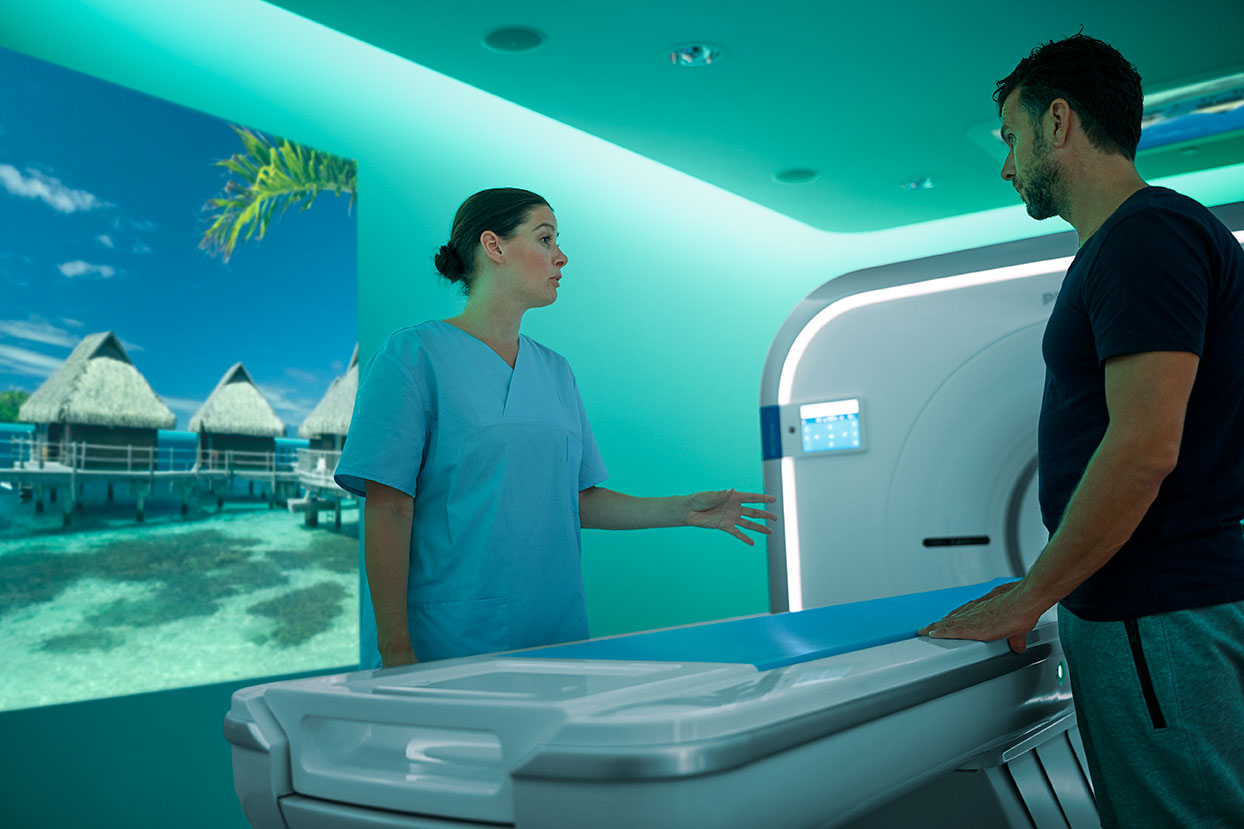What is multi-slice computed tomography – MSCT scanning?
The multi-slice CT scanner uses computers and rotating X-ray machines to create cross-sectional images of the body. These images provide more detailed information than conventional X-rays. The images can show soft tissues, blood vessels and bones in different parts of the body. The Pulse Cardiology Center uses a 128 multislice Incisive CT Philps scanner.
Computed 128-slice tomography allows a complete and non-invasive examination of blood vessels (CT angiography), in just a few seconds, as well as CT coronary angiography. MSCT coronary angiography is very useful in the diagnosis of heart disease – primarily coronary artery disease – so in some cases it can adequately replace invasive coronary angiography. This method is also a good solution for monitoring the condition of operated patients and patients with bypass, in whom it is safer to check the patency of grafts with the help of a scanner than coronary angiography.
Why is a CT scan performed?

CT scanning has many applications, but it is especially suitable for diagnosing diseases and assessing injuries. Multi-slice computed tomography can help your doctor:
- diagnosis of infections, muscle disorders and bone fractures
- accurate location of masses and tumors (including cancer)
- study of blood vessels and other internal structures
- assessment of the extent of internal injuries and internal bleeding
- follow-up of surgeries and biopsies
- monitoring the effectiveness of treatment for certain medical conditions including cancer and heart disease
Multislice CT imaging is a minimally invasive method and can be performed very quickly.
How is a multi-slice CT scan performed?
When it comes time for a CT scan, you will be asked to change into a hospital gown and remove all metal objects from yourself, as metal can interfere with the results of the CT scan. These items include jewelry, glasses and dentures. Tell your radiologist if you feel anxious or claustrophobic about the scanning process. The staff at the Pulse Cardiology Center can give you tips to help you feel calm, or they can give you sedatives (medicines to help you relax) if needed.
After that, the doctor will ask you to lie down, so that the subject is facing the table, which is inserted into the CT scanner. The staff will leave the testing room and enter the control room and you will be able to communicate with the doctor via intercom.
As the table slowly pulls you into the scanner, the X-ray machine will rotate around you. Each rotation creates numerous images of your body. You may hear clicking and buzzing during the scan. The table will move a few millimeters until the recording is completed. The whole procedure lasts from 20 minutes to one hour, depending on the body part whic is being filmed.
It is very important to lie still while CT scans are taken, as movements can result in blurry images. Your doctor may ask you to hold your breath briefly during the test to prevent your breasts from moving up and down. If a small child needs a CT scan, the doctor may recommend a sedative to keep the child from moving.
When the CT scan is complete, the images are sent to a radiologist for examination. A radiologist is a doctor who diagnoses and treats a condition using imaging techniques, such as CT scans and X-rays.
What is multislice CT scan with contrast?
Thick substances like bones are easily seen on the MSCT image. But soft tissues do not appear. The pictures may look pale. To allow the soft tissues to show up clearly, a special color called a contrast material may be included. The contrast material blocks X-rays and the tissues are shown in white on the image, highlighting blood vessels, organs or other structures.
Contrasting materials are usually made of iodine or barium sulfate. You can get these materials in one or more ways:
- By injection: The drugs are injected directly into a vein, so that the blood vessels, urinary tract, liver or gallbladder stand out in the picture.
- Oral: Drinking fluids with a contrast material can improve the scanning of your digestive tract and the path of food through your body.
- Enema: If the intestines are scanned, contrast material can be inserted into the rectum.
If your doctor plans to use contrast material, he may ask you not to eat certain foods or liquids for four to six hours before the scheduled CT scan.
After the MSCT scan, you need to drink plenty of fluids to help the kidneys remove the contrast material from the body.
What are the risks associated with a CT scan?
There are very few risks associated with CT scans. Although CT scans expose you to more radiation than typical X-rays, the risk of developing radiation-induced cancer is very small if you have only one scan. The risk of cancer can increase over time if you opt for multiple X-rays or CT scans. The risk of cancer is increased in children who undergo a CT scan, especially the chest and abdomen.
Some people have an allergic reaction to contrast material. Most contrast agents contain iodine, so if you have had side effects to iodine before, be sure to tell your doctor. Your doctor may give you allergy medications or steroids to avoid side effects.
It is also important to tell your doctor if you are pregnant. Although there is little chance that CT scans will harm your baby, your doctor may recommend another examination, such as an ultrasound or magnetic resonance imaging, to minimize the risk.
The CT scan results
The results of the CT scan are considered normal if the radiologist did not notice any tumors, blood clots, fractures or other abnormalities in the images. If any abnormalities are detected during the CT scan, you may need additional tests or treatments, depending on the type of abnormality detected.
